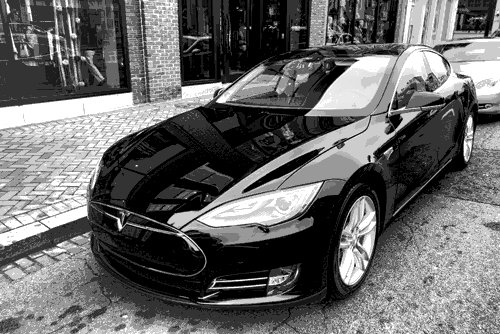Tesla Motors Inc. (Nasdaq: TSLA) Chief Executive Officer Elon Musk had been hinting at the Tesla Gigafactory for months, and this week he delivered more of the information investors have been craving.
The lithium ion battery-producing Gigafactory is expected to cost the automaker $5 billion to construct and will employ approximately 6,500 people.
Tesla is currently searching for locations in Arizona, Nevada, New Mexico, and Texas. The site is expected to be between 500 and 1,000 acres in size. A final location has not yet been picked.

While the size and price of the factory has captured the headlines, it's the output capacity of the plant that has captured investors' imaginations...
Tesla Gigafactory's Output Capacity
Tesla announced in its Q4 earnings report that because of a production bottleneck its current production of Model S sedans is capped at 600 per week. By the end of 2014, the company expects to up that production to 1,000 vehicles weekly.
The bottleneck stems from lithium battery production, which is expensive and time-consuming. That's where the Tesla Gigafactory comes in.
Upon completion, the plant is expected to produce enough lithium ion batteries to power 500,000 vehicles annually.
Not only will the battery megafactory increase battery production, it will also decrease the cost of producing electric-powered vehicles.
Elon Musk has previously mentioned his plans to produce a more modestly priced version of the signature Tesla Model S, and the Gigafactory will be key to those plans.
"The Gigafactory is designed to reduce cell costs much faster than the status quo and, by 2020, produce more lithium ion batteries annually than were produced worldwide in 2013," the company stated.
The increased production from the Gigafactory will have a major impact on the auto industry, but it's the company's impact on other markets that could send the stock soaring...
The Future of Tesla (Nasdaq: TSLA) Stock
Lithium ion batteries are not only used in electric vehicles; they are also used in tablets, smartphones, and laptops.
And as Musk has pointed out, they are a big part of the solar power industry. Coincidentally, Musk is the CEO and co-founder of the solar power company SolarCity Corp. (Nasdaq: SCTY), which owns a 32% share of the residential solar power market.
"[The Gigafactory] will also allow us to address the solar power industry's need for a massive volume of stationary battery packs," Musk said.
Tesla made its Gigafactory announcement on Tuesday evening. The following morning, TSLA stock touched another all-time high of $265.00.
Since the start of 2013, Tesla stock has gained an incredible 643%. The stock is up 64% in 2014 alone.
"[The Gigafactory] is the future of the company," Wedbush Securities Analyst Craig Irwin told CNN. "They need to cut the cost of the battery in half in order to make a half-million cars. This is how they are going to do it."
Nothing seems capable of slowing Tesla's meteoric rise. If the automaker can lower the cost of lithium ion battery production, increase its vehicle production, and impact other industries the way many project it can, there's no telling how high TSLA will go.
Where do you think the Tesla Gigafactory will be located? Let us know on Twitter @moneymorning using #Tesla.
There are huge profit opportunities to be found in the bioscience sector if you know where to look. You can't afford to miss these three bioscience breakthroughs.
Related Articles:


